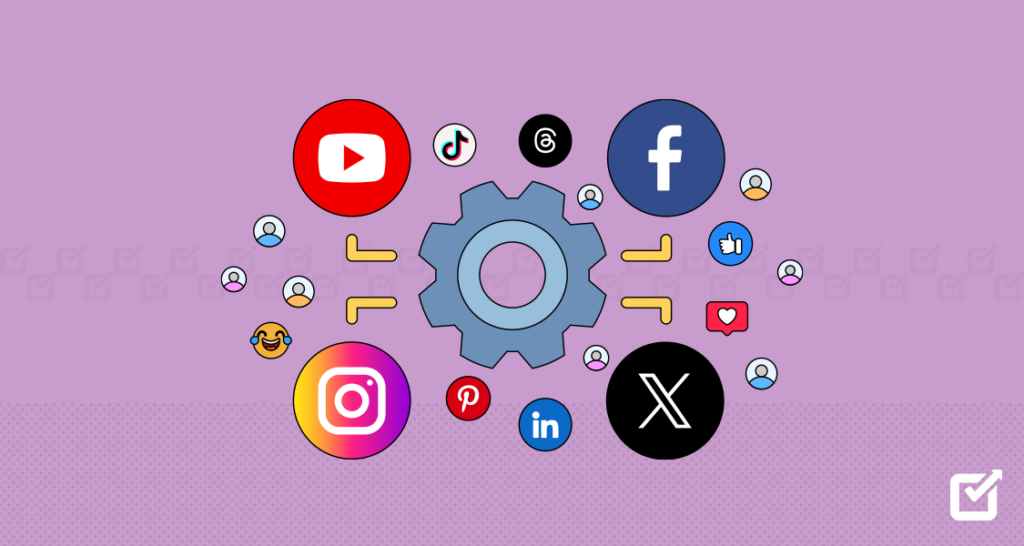Social media has become an essential tool for businesses, influencers, and digital marketers. However, handling multiple social media accounts across various platforms—Facebook, Instagram, Twitter, LinkedIn, TikTok, and more—can be overwhelming. Without a proper strategy, you may find yourself spending too much time juggling posts, responding to comments, and tracking performance analytics.
So, how do you efficiently manage multiple social media accounts without feeling burnt out? In this guide, we’ll explore time-saving strategies, automation tools, and best practices to help streamline your social media workflow.

Why Efficient Social Media Management Matters
Effective social media management goes beyond posting content—it’s about creating a cohesive strategy that drives results across platforms. Here’s why mastering the art of managing multiple accounts is essential:
- Brand Consistency: Ensures your messaging aligns with your brand identity across all channels.
- Time-Saving: Streamlined workflows reduce time spent switching between accounts.
- Improved Engagement: Active management fosters better audience interaction and loyalty.
- Data-Driven Decisions: Insights from multiple accounts help refine strategies for optimal performance.
Challenges of Managing Multiple Social Media Accounts
Before diving into solutions, let’s address common challenges faced by marketers juggling multiple accounts:
- Content Overload: Creating unique content for each platform can be time-consuming.
- Platform-Specific Strategies: Each platform has its own audience behavior and algorithm nuances.
- Tracking Performance Metrics: Monitoring analytics for multiple accounts requires organization and precision.
- Maintaining Engagement: Responding to comments, messages, and mentions across platforms can be overwhelming.
1. Define Clear Goals for Each Account
Start by identifying the purpose of each account. Are you building brand awareness, driving sales, or fostering community engagement? Setting specific goals ensures your efforts are focused and measurable.
Example:
A fashion brand might use Instagram to showcase products visually, LinkedIn for B2B partnerships, and TikTok for engaging short-form videos targeting Gen Z.
2. Use a Unified Social Media Management Tool
Investing in a robust social media management tool is essential for efficiency. These tools centralize tasks like scheduling, monitoring, and analyzing performance across platforms.
Recommended Tools:
- Hootsuite: Ideal for scheduling posts and tracking analytics.
- Sprout Social: Offers advanced reporting and team collaboration features.
- Planable: Simplifies content approval workflows for teams.
3. Create a Comprehensive Content Calendar
A content calendar helps you plan posts in advance while ensuring consistency across platforms.
Steps to Build a Content Calendar:
- Outline key dates (e.g., product launches or holidays).
- Assign content themes to each platform.
- Schedule posts based on audience activity patterns.
Example:
For a fitness brand:
- Instagram: Daily workout tips.
- TikTok: Fun challenges every Friday.
- LinkedIn: Monthly thought leadership articles.
4. Customize Content for Each Platform
Avoid posting the same content across all accounts without adjustments—each platform caters to different audiences.
Tips for Customization:
- Instagram: Focus on high-quality visuals with engaging captions.
- LinkedIn: Publish professional insights or case studies.
- TikTok: Create entertaining short-form videos with trending audio.
- Facebook: Share community-focused updates or event promotions.
5. Leverage Automation Wisely
Automation tools save time but should be used thoughtfully to maintain authenticity.
What You Can Automate:
- Scheduling posts at optimal times.
- Sending reminders for upcoming campaigns.
- Generating performance reports.
What You Shouldn’t Automate:
- Responding to comments or DMs—personalized engagement is key.
6. Monitor Engagement Across Platforms
Engagement is the lifeblood of social media success. Actively monitor comments, mentions, and messages to foster meaningful interactions.
Tools for Monitoring Engagement:
- Sprinklr’s Media Monitoring feature alerts you to brand mentions in real-time.
- HubSpot’s CRM integration tracks customer interactions across channels.
7. Analyze Performance Metrics Regularly
Tracking metrics like reach, engagement rates, click-throughs, and conversions helps refine your strategy.
Key Metrics to Monitor:
- Audience growth per platform.
- Post engagement rates (likes, shares, comments).
- Website traffic driven by social media campaigns.
Use analytics dashboards provided by tools like Sprout Social or Hootsuite to simplify this process.

Best Practices for Managing Multiple Social Media Accounts
1. Maintain Brand Consistency
Ensure your visual identity (logos, colors) and tone remain consistent across all platforms.
2. Delegate Tasks
If managing multiple accounts feels overwhelming, consider delegating tasks like content creation or analytics tracking to team members.
3. Stay Updated on Trends
Social media evolves rapidly—stay informed about new features or algorithm changes on platforms like TikTok or Instagram.
Real-Life Example: Starbucks’ Multi-Platform Strategy
Starbucks excels at managing multiple social media accounts by tailoring content to each platform:
- Instagram showcases visually appealing coffee art.
- Twitter engages followers with witty replies and trending hashtags.
- LinkedIn highlights sustainability initiatives and corporate achievements.
This approach ensures Starbucks connects with diverse audiences while maintaining brand consistency.
Common Mistakes to Avoid
- Overposting: Bombarding followers with excessive updates can lead to disengagement.
- Ignoring Analytics: Without data insights, it’s impossible to optimize strategies effectively.
- Neglecting Smaller Platforms: Platforms like Pinterest or Reddit often have niche audiences worth targeting.
Conclusion
Managing multiple social media accounts efficiently requires planning, organization, and the right tools. By defining clear goals, leveraging automation wisely, customizing content per platform, and regularly analyzing performance metrics, you can streamline your efforts while maximizing impact.


Leave A Comment